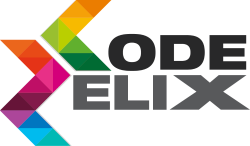The most important question for every business is how to choose the right marketing type. This blog will contain 5 differences between digital and traditional marketing for you to analyze your right fit.
What is digital marketing
Digital marketing is a cutting-edge marketing strategy that became popular in the age of the internet and social media.
It primarily uses web marketing to promote and sell products and services. It also refers to the promotion of a business through digital media and gadgets such as Google, Facebook, Instagram, YouTube, and other similar sites.
Some forms of digital marketing:
- Search engine optimization (SEO)
- Web design.
- Content marketing.
- Social media marketing.
- Email marketing.
What is traditional marketing
Traditional marketing is a method of marketing that has been around for a long time.
It refers to a type of promotion or advertisement, such as flyers, billboards, TV ads, radio ads, print ads, newspaper ads, that corporations employ to sell their products in the early stages.
These are some forms of traditional marketing:
- Door-to-door marketing
- Banner ads
- Television advertisements
- Radio advertising
- Print advertising
- Newspaper advertising
Here are 5 main differences between digital marketing and traditional marketing
- Difference in terms of type of media
Digital marketing offers opportunities in terms
“Internet users currently account for 57% of the world’s population.”
The primary distinction between digital and conventional marketing is the channel via which a marketing message is delivered to an audience. Traditional marketing relies on print media such as magazines and newspapers, whereas digital marketing relies on digital platforms such as social media and websites.
- Speed and efficiency of marketing
Marketing through the medium of extremely quick and efficient. Once the campaign is finalized and the digital art is created, it is ready to upload and promote.
- Growth hacking opportunities
Digital marketing allows running campaigns on the internet. This given an added advantage to the viewers to further re-share the content on the social media. It provides a medium to engage with the brand in the form of likes and comment, making it more effective.
Sponsored media is one of the most successful marketing channels for promoting your brand on the internet, and well-targeted campaigns on the right channels may provide impressive results.
According to HubSpot, 96% of consumers research a company on the internet.
On the other hand, traditional media is only used as a brand recall value for the business. It does not provide any opportunities to break through the marketing
- Target the right audience
Digital marketing provides a tool to target the desired audience favorable to the brand.
Consider a business that sells baby products. The target audience for the product are new parents. Thus, why does a college student need to see the ads unnecessarily.
Digital marketing narrows down to the right group of audience. This created a higher rate for the views to get converted to targeted customers as their interest is in line with the products/services displayed.
While traditional market does not allow the brand to leverage over their audience. These ads are a standalone display to a general audience. At times, the marketed products may not appeal to the viewers.
- Difference in terms of pricing
Traditional marketing is more expensive, and it’s impossible to track outcomes. This is because one never knows how the ad will ultimately perform.
However, in digital marketing, you might test several kinds of advertising on your consumer persona to identify the exact audience and ad wording that would give you the best return on investment.
Conclusion
In the end, both methods of marketing offer advantages and disadvantages, but the key is to understand your individual marketing goals, financial constraints, and target demographic.


